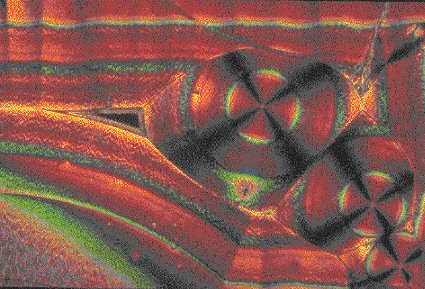
Certain crystals possess the property of birefringence, that is they possess two refractive indices. A beam of unpolarised light entering such a material will be divided into two beams, vibrating in different planes perpendicular to each other (polarised rays). So called dichroic or pleochroic crystals have this property, together with a strong absorption of one of the polarised rays. So the light emerging from such a material will be plane polarised light.
Modern polarising material are plastic films that behave in this way. Well over a hundred years ago Dr Herapath of Bristol discovered and described a salt of quinine that had polarising properties. He succeeded in making artificial crystals large enough to fit an eyepiece of a microscope. Indeed, the di-iodosulphate of quinine that he prepared became known as herapathite. Considerable difficulty was experienced with producing uniform, large crystals though and the work stopped. Then in 1928, an American called Edwin Land thought of making a suspension of tiny herapathite crystals which he spread as a thin layer between supporting sheets. A patented method was used to cause all the crystals to lie with their axes more or less parallel, which was a problem that Herapath had had. Thus the first type-J Polaroid was born, and the rest, as they say, is history.
This type of material is referred to as microcrystalline, and had a finite lifetime since the crystals become disorientated over time. This was replaced by the so-called molecular type which is made by heating and stretching a sheet of PVA laminated to a supporting sheet of cellulose acetate treated with an iodine solotion. This H-type material may be recognised by those that use the material in general use, which is HN-22.

All photomicrographs © Mike Samworth.
Please report any Web problems
or offer general comments to the Micscape Editor,
via the contact on current Micscape Index.
Micscape is the on-line monthly
magazine of the Microscopy UK web
site at Microscopy-UK